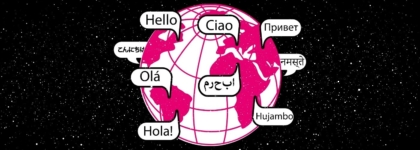What Is Automatic Translation (And Is It Good Enough)?
Updated: May 21, 2025
Learn more about video translation 🎥
Video translation offers the potential of making your content more accessible to your viewers, as well as drastically improving your audience size – but these benefits only apply if you’re providing accurate, high-quality translations. Many organizations rely on automatic translation software to conveniently provide foreign-language content, but these solutions aren’t always foolproof.
Just like with captioning solutions, automatic translation methods can’t be relied on to create highly accurate (or sometimes, even comprehensible) translations. While the outcome of translation failures are typically just awkward grammatical errors or weird word substitutions that make for hilarious YouTube content, mistranslations could also have serious real-life consequences – like the man who was arrested in 2017 after Facebook’s algorithm mistakenly translated his post as a foreign-language threat.
What’s the deal with automatic translation?
The most commonly used automatic translation software comes from Google, with over 500 million users every day. The engine that powers Google Translate – called the Google Neural Machine Translation (GNMT) system – was updated in 2016, and its primary goal was to improve the accuracy of their machine translation model.
Without getting too technical, the biggest difference presented by the GNMT system was the new capability to consider entire sentences as a unit for translation. By comparison, most automatic translation engines consider each word independently, which often results in nonsensical translations. Automatic or machine-powered technologies simply don’t have the capacity for contextualization that human beings do.
While the introduction of the GNMT system did enhance Google Translate’s engine in some ways, it’s hard to fairly calculate an average improvement because accuracy varies widely across languages. A 2019 study showed that commonly spoken languages like Spanish boasted over 90% translation accuracy, but more unique languages like Farsi or Armenian can drop to below 65% accuracy. Depending on which foreign languages make the most sense for your organization to use, automatic software engines may not always provide top-quality translations.
So if automatic solutions can’t always be relied upon, how do you guarantee your organization provides accurate, high-quality video translations?
How to avoid auto-translation errors
Whether we’re talking captioning, transcription, or translations, we always emphasize the importance of the human touch in enhancing the output of automatic solutions. Unlike other translation vendors, 3Play ensures that your organization’s video translations are always performed by professional linguists who can accurately capture the cultural and contextual nuances of your video.
We’ve partnered with industry-leading translation partners – including TransPerfect, Gengo, and Amara – to offer translations in over 40 languages, with the flexibility to fit a variety of needs regarding cost, turnaround time, and subject matter. Our network of professional linguists have a wide range of expertise, and can conduct multiple rounds of review to provide translations that read as if they were originally written in the target language (and not translated word-for-word).
Want to learn more about video translation?







